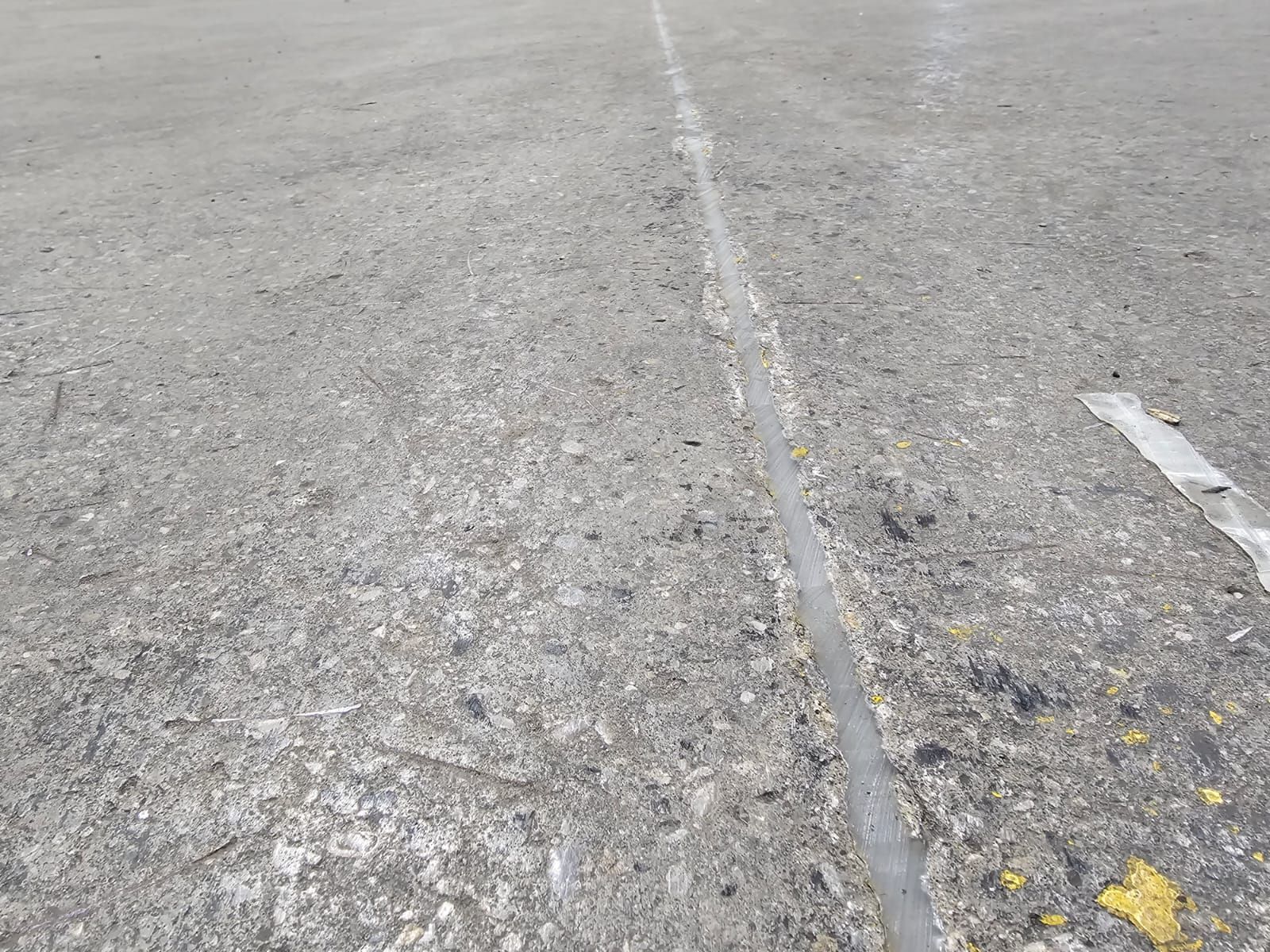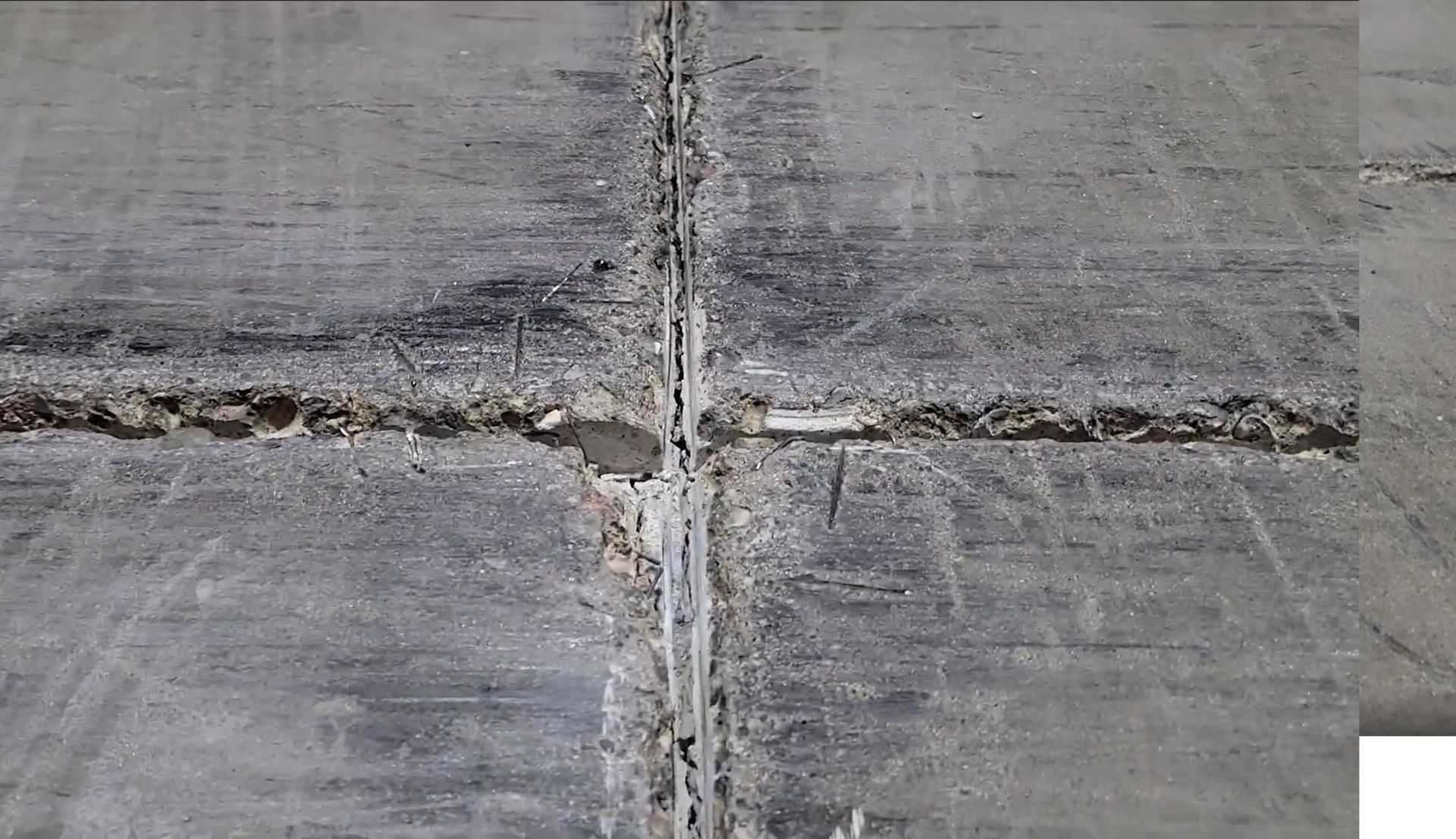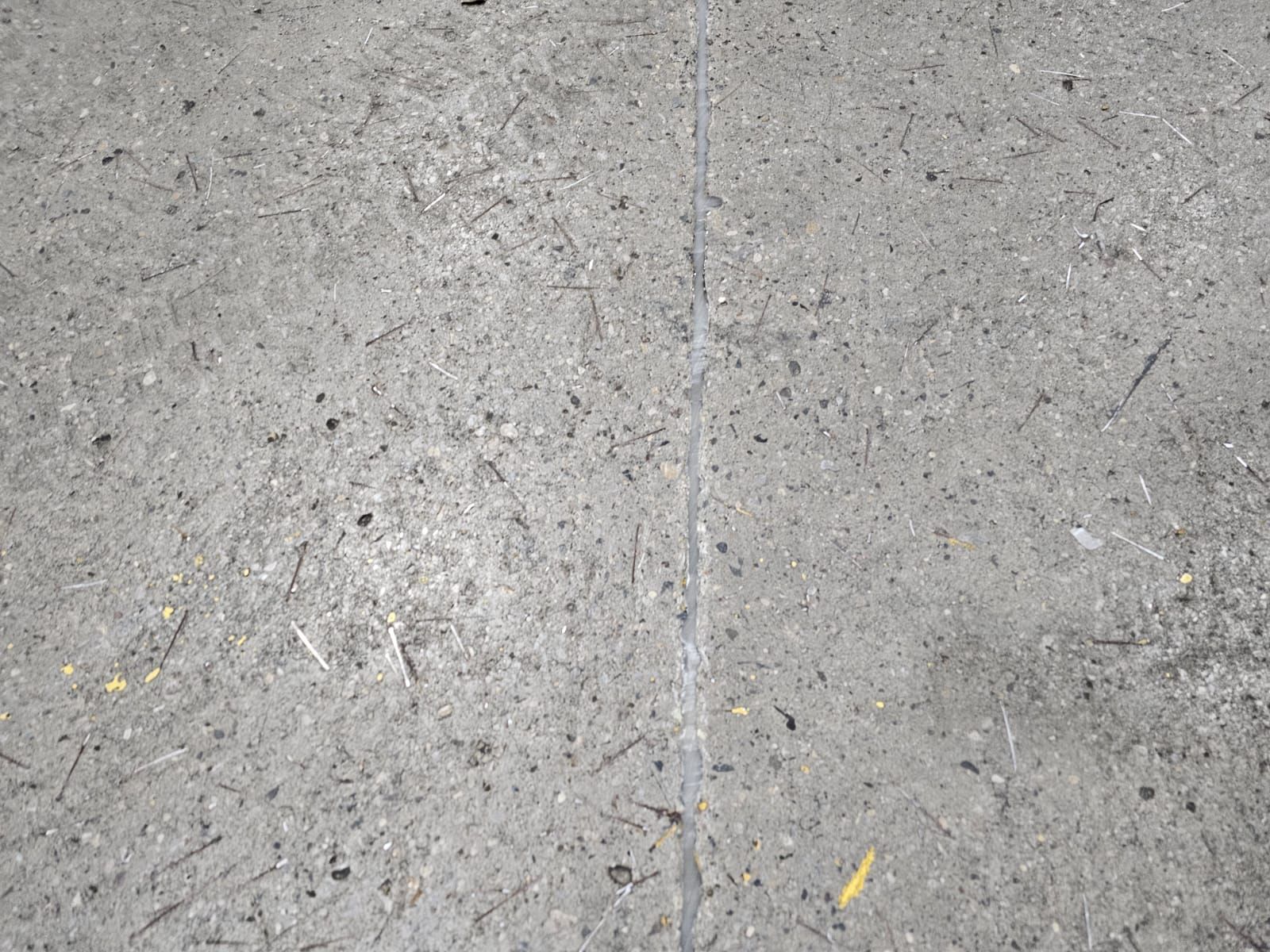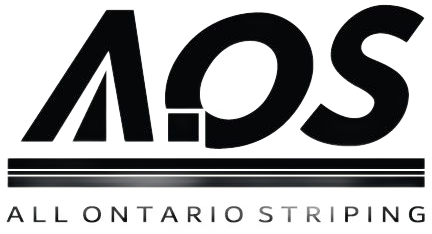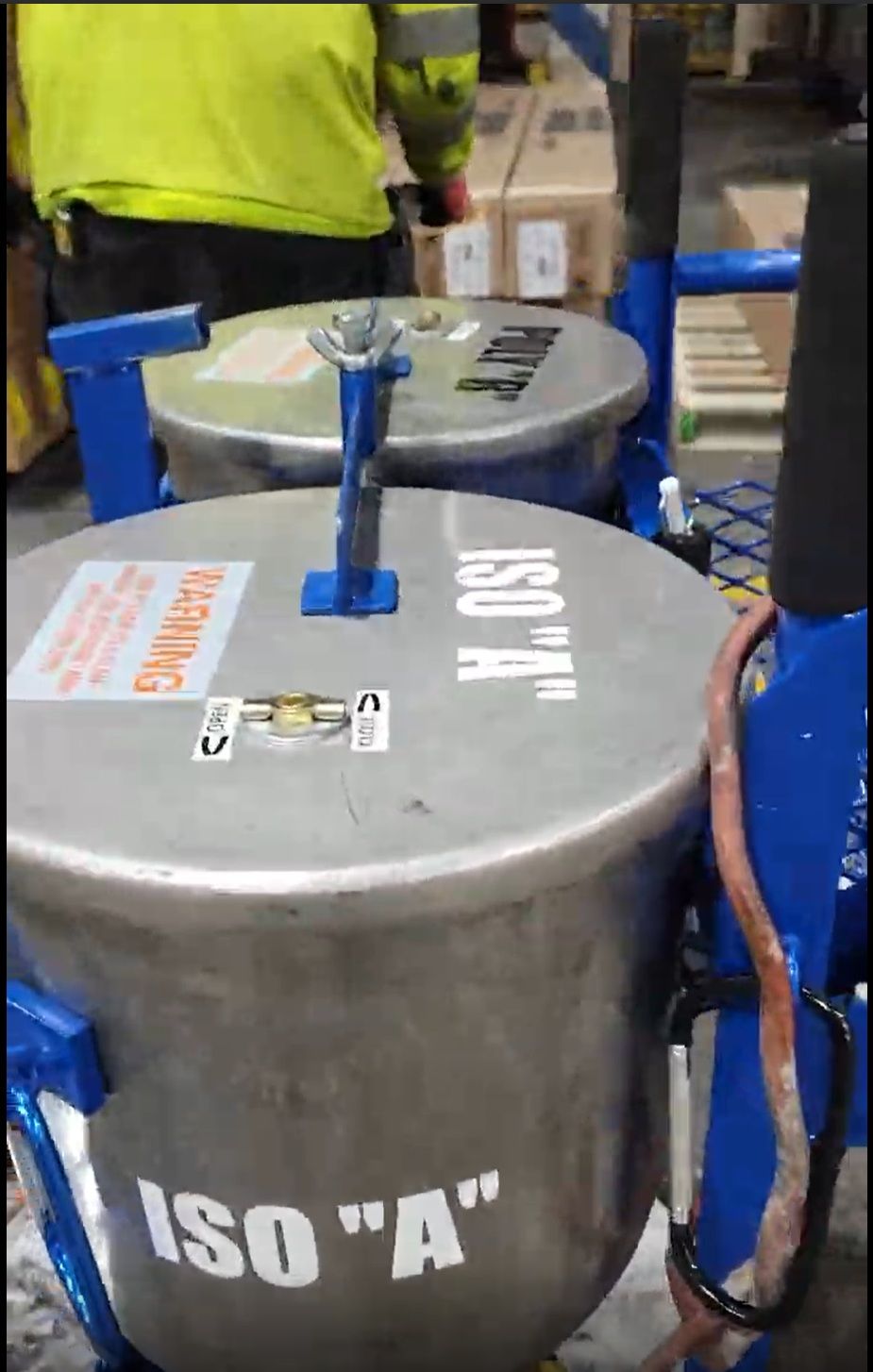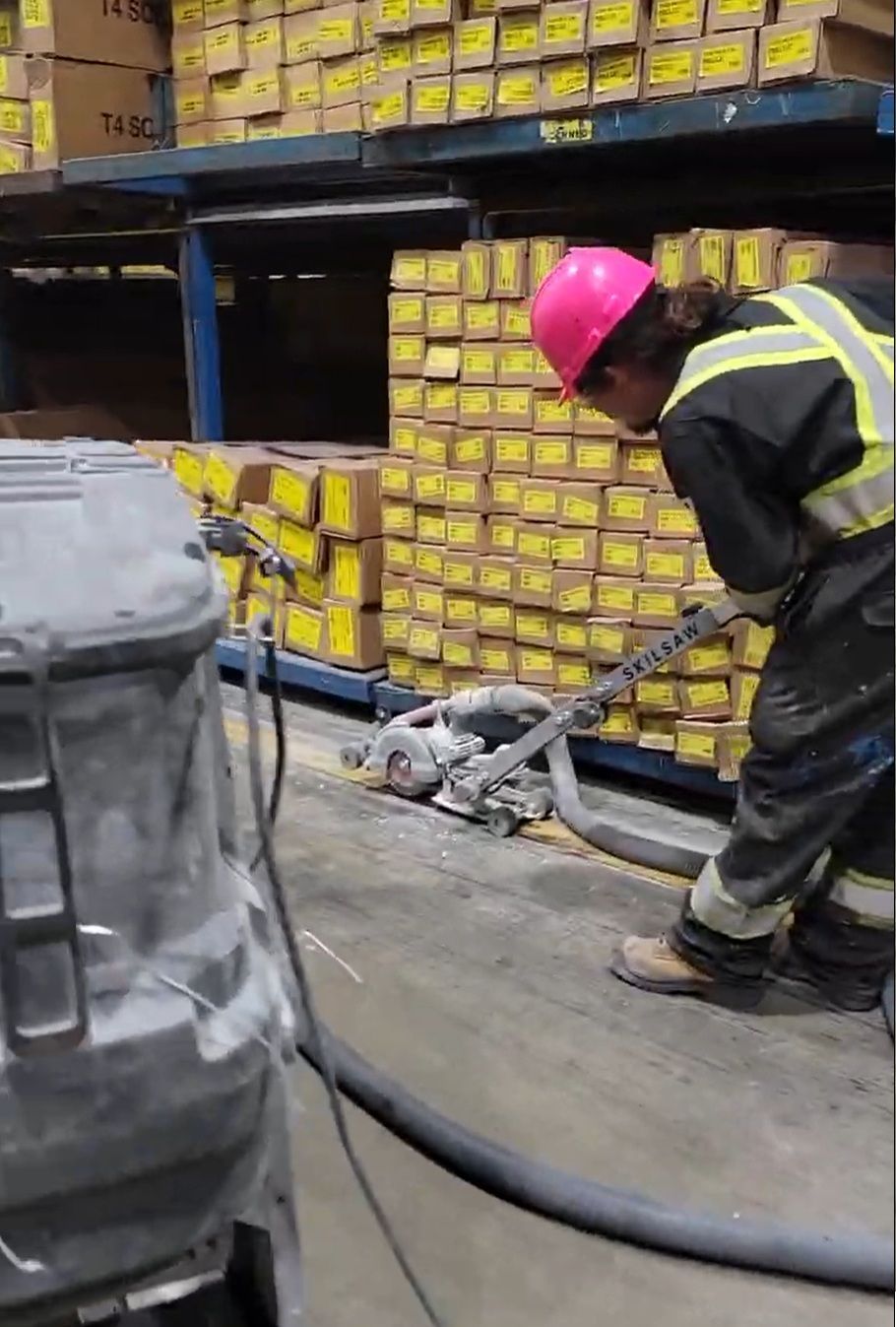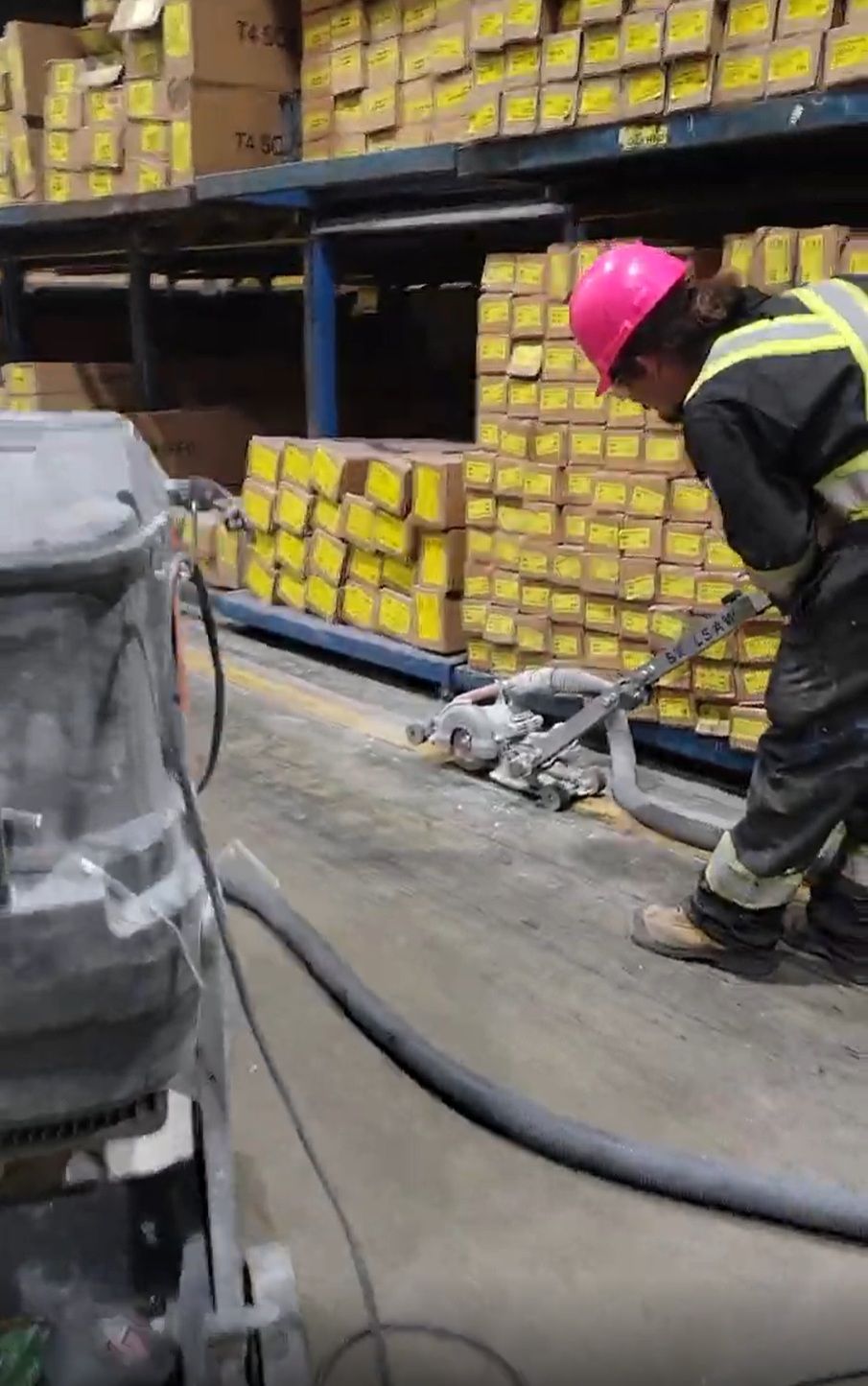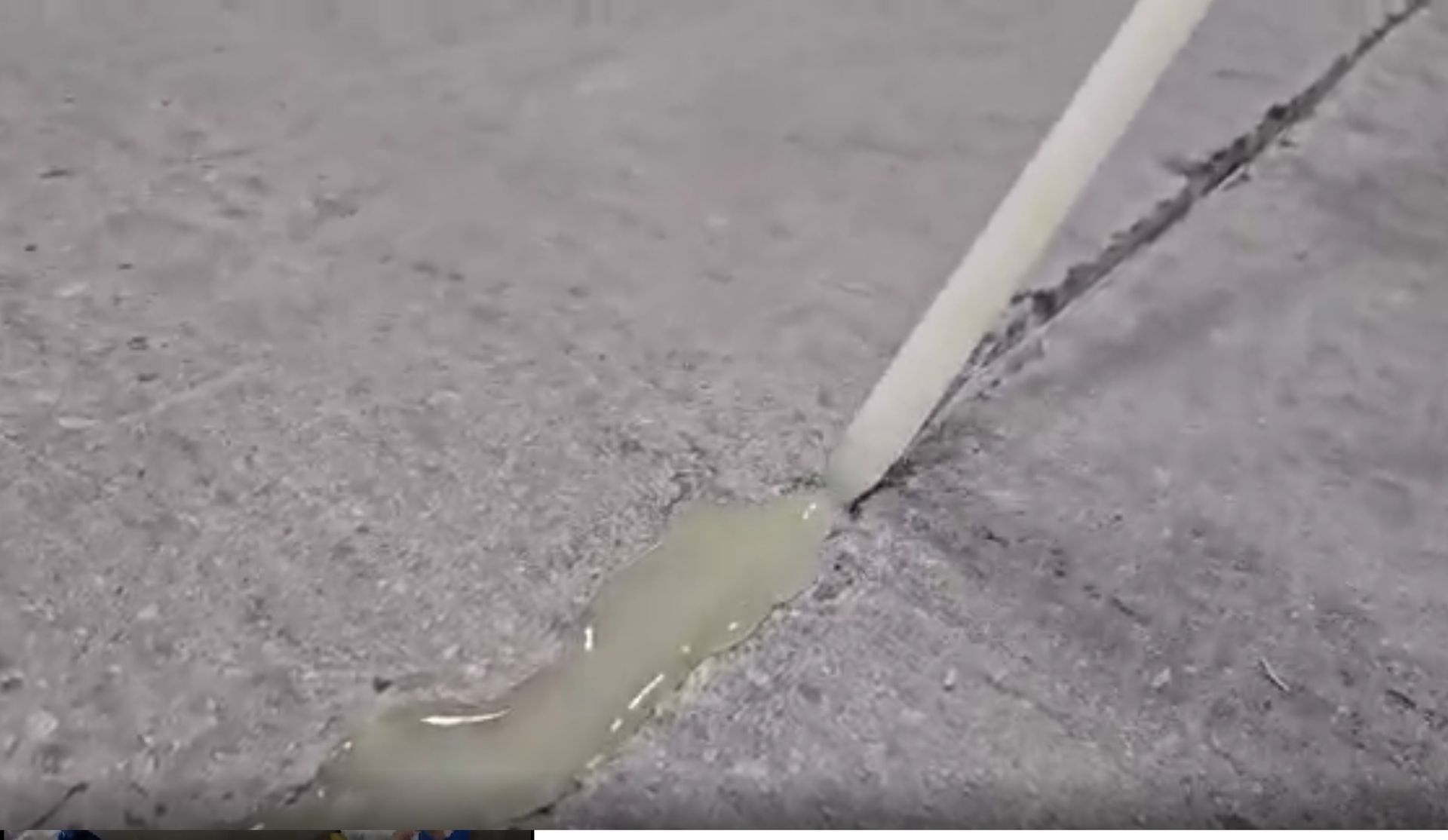Cracked or broken concrete?
We can repair it all.
Concrete Cracks & Joints Sealing
When we first started painting warehouse lines, we thought our job ended with striping. But time and again, we’d notice something else: expansion joints and cracks in the concrete floors that were falling apart. Forklifts would hit them, the joint fillers were crumbling, and the damage kept spreading. It didn’t matter how sharp the lines looked — if the floor underneath was breaking down, it created bumps, safety hazards, and costly repairs for the property owners.
That’s how we became specialists in concrete cracks and joints sealing.
Why Joints & Crack Repairs Matter
How We Fix It
- Smooth out the floor surface — forklifts roll easier, cleaners work better.
- Stop cracks from spreading — prevent small issues from turning into major repairs.
- Extend the life of the concrete floor — saving warehouse owners on costly slab replacements.
CHOOSING THE BEST REPAIR MATERIAL
| Material | Best For | Benefits | Considerations |
|---|---|---|---|
| Polyurea | Expansion joint filling in active warehouses | - Very fast curing (minutes) - Flexible, handles movement - Durable against forklift traffic | Must be applied with proper equipment; not ideal for wide structural cracks |
| Epoxy Resin | Structural or larger cracks | - High strength bonding - Restores slab integrity - Long-lasting repair | Slower cure time; more rigid (less flexible under movement) |
| Urethane Sealants | Non-structural cracks and joints | - Flexible and resilient - Good for sealing moving cracks - Cost-effective | Not as strong as epoxy; may need periodic re-application |
One-Stop Warehouse Solutions Across Southern Ontario
Most of the time, we discover these problems when we’re already on-site to paint warehouse lines. Instead of leaving it for another contractor, we offer aone-stop solution: we stripe your lines, seal your cracks, refill your joints, and leave the floor smooth, safe, and long-lasting.
We proudly serveToronto, the Greater Toronto Area, and warehouses across Southern Ontario. From large-scale distribution centers to smaller private facilities, our crews bring the tools, materials, and expertise to get it done right.
Restore Your Warehouse Floors — Seal Cracks & Joints Today!
Protect your investment and keep your floors smooth, safe, and long-lasting.
For up-to-date photos and videos, please see our Instagram or Youtube!
BEFORE & AFTER

